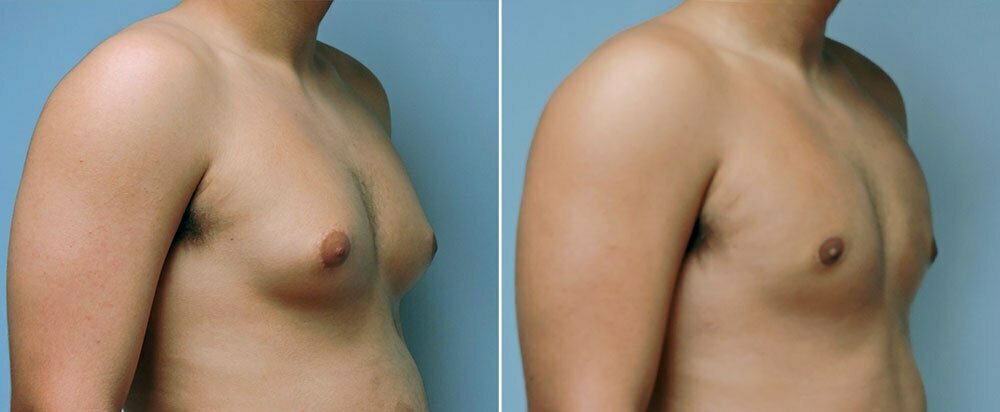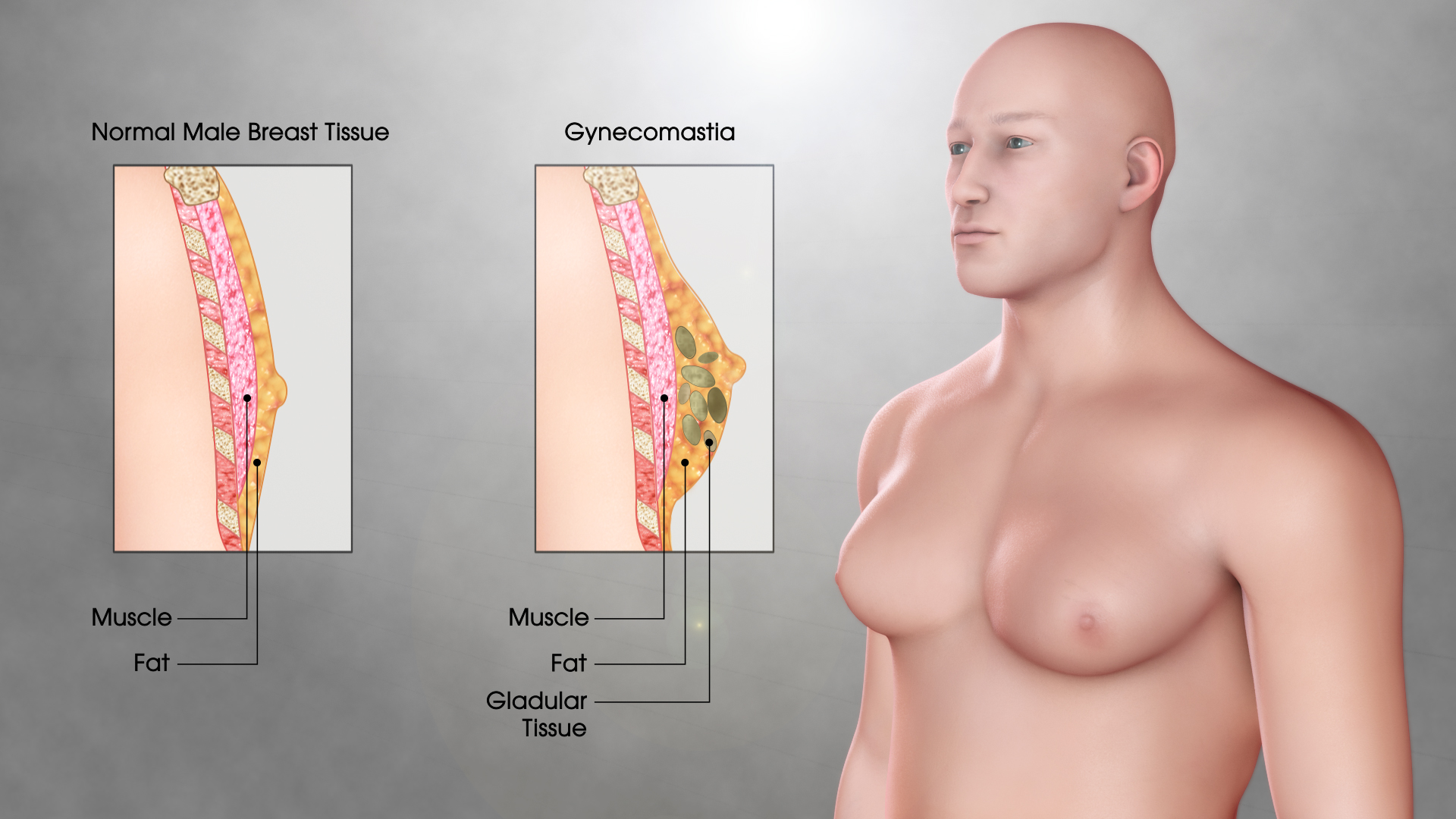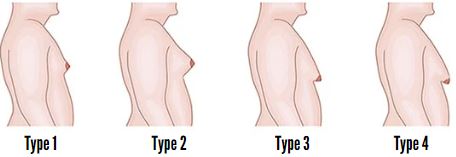Journal
Male Breast Reduction (Gynecomastia) in South Korea
2023-08-10
Body

Overview
It is acknowledged that female self-consciousness regarding their breasts exists. And it's now fairly frequent that they can have their chests shaped more closely to their desired shape and use cosmetic surgery to address their unwanted shapes. However, it is far less common in the case of men. An enlargement of the mammary gland in men is known as gynecomastia. Yes, just like women, guys have two mammary glands under their nipples. The effects of specific hormones cause the mammary glands to expand, which can happen on both sides or just one. However, tumor-related swellings are not the same as gynecomastia. In general, there is no medical risk associated with gynecomastia. However, a man may feel self-conscious about his protruding chest. He would rather avoid bringing up the topic with his friends, family, or even with a doctor.
If the man's inflated mammary gland is not addressed promptly after it has been activated by hormones, the breast volume may continue to bother the patient in the future. In this instance, surgery to remove the gland may be necessary in addition to treatment that is administered a bit too late to achieve a more aesthetically manly thorax.
Like in women's breasts, cysts and fibroadenomas can develop if the mammary gland stays enlarged and gynecomastia is not addressed. On the other hand, breast cancer in men with gynecomastia is somewhat uncommon.
What is gynecomastia?
Gynecomastia or “man boobs” is commonly known as an overdevelopment of the breast tissue in men. One or both sides of the mammary glands have grown larger in this condition, sometimes unevenly. It is one of the most frequently performed procedures in South Korea.

Although it may sometimes cause pain, it more frequently leads to psychological, aesthetically unpleasant, and functional discomfort, especially when it comes to sports and clothing. There may be major effects on intimate relationships as well. The majority of adult men with gynecomastia report no symptoms. The following are examples of the condition's signs and symptoms:
- Pain, particularly in adolescents.
- Swollen breast tissue.
- Breast tenderness.
- Nipple sensitivity with rubbing against clothes.
Breast hypertrophy (abnormal increase) is a benign but embarrassing condition that can be a consequence of:
- Totally greasy.
- Purely glandular.
- Mixed: glandular and greasy.
- Accompanied by excess skin tissue.
- Accompanied by an increase in the areola's diameter.
- Both unilaterally and bilaterally.
Causes of Gynecomastia
Gynecomastia has been connected to various medications, hormonal imbalances, and steroid use, even if the precise cause is not always recognized. Therefore, it can only be treated with male breast reduction surgery. By conducting and treating one of the four different types of gynecomastia procedures, a skilled and board-certified surgeon can perform safe and effective male chest reduction surgery, including:

Type 1: the Puffy Nipple, a small tissue expansion behind the areola, is a characteristic feature of the breast. In the majority of cases, simply excess glandular tissue is present.
Type 2: moderate breast augmentation that extends past the areola and has boundaries that blend into the chest region. It could be made up of glandular tissue, fatty tissue, or both.
Type 3: the same as moderate breast augmentation, but with more skin. There may be fatty tissue, glandular tissue, or probably both.
Type 4: the breasts look feminine because of their prominent growth and loose skin. They are mostly seen in older men with deteriorating skin quality, which makes the breasts look smaller than when the skin was firm.
Gynecomastia diagnosis
When there is a noticeable increase in breast volume, gynecomastia is a problem that the patient can clearly detect for themselves. However, gynecomastia can also be detected in other situations:
By coincidence, during a visit for a different purpose related to health, or during a consultation in the event that pain or discomfort is present.
The doctor goes through the following steps in order to diagnose gynecomastia and identify its cause:
- Clinical examination, which involves examining the breasts.
- Asking the patient questions to learn about his medical history, personal and family background, current medications, and health issues.
- Blood tests examine sex hormones (estrogens, testosterone), as well as other hormones (prolactin, cortisol, pituitary hormones, thyroid hormones, etc.), kidney function, and adrenal gland function.
- A breast ultrasound or mammography to confirm that there is no breast cancerous tissue.
- An x-ray of the chest to rule out a respiratory system malignancy.
- A breast tissue biopsy, particularly in cases where a palpable lump is present. It is feasible to characterize the nature of the breast tissues implicated in gynecomastia using histological anatomopathological investigation.
The doctor will be able then to ascertain the gynecomastia's nature, symmetry, and volume at the conclusion of these exams.
Gynecomastia treatment
Gynecomastia performance is based on a number of factors:
- Age of patient: Gynecomastia related to puberty often has a brief duration, thus without intervention, it goes away in a few months.
- The reason for the mammary gland's abnormal growth.
Prioritizing medical treatment is the first step taken if a cause is found during the preoperative evaluation. Gynecomastia regression can occur fully or partially as a result. If not, and the discomfort in day-to-day living is substantial, surgical therapy might be recommended.
With the least amount of pain and discomfort possible, the goal of the gynecomastia procedure is to balance the patient's breast volume and skin envelope in accordance with their body size. Because complete removal of the mammary gland could result in ugly deformities, it is important to avoid doing so in order to preserve body harmony.
To remove fat and glandular tissue during the procedure, the surgeon combines liposuction and excision procedures.
Liposuction will be the first surgical method to be performed. The breasts will be "emptied" and given the ideal look via the removal of fat. After this procedure, the scar will be hardly noticeable. When liposuction is used alone, it is particularly recommended for patients with pseudo-gynecomastia or moderate gynecomastia, as there is no need to remove extra skin or the mammary gland in these cases.
An addition to or substitute for liposuction is surgical excision. When it is necessary to remove extra skin or the mammary gland, it will be definitely performed. Most of the time, the incisions surrounding the areola are not noticeable. However, if there has been a substantial amount of skin removed, it can occasionally spread to the sternum and armpits.
How to prepare for Gynecomastia?
The patient must give up smoking at least three weeks prior to the treatment and for up to one month thereafter if he used to smoke. In fact, smoking raises the risk of postoperative problems related to general anesthesia. It raises the risk of infection and necrosis and slows down the healing process. Additionally, within ten days prior to the surgery, no aspirin-containing medicine should be taken.
The question here, especially for whom is going to leave their country to have a gynecomastia procedure in South Korea: How much time does it take to recover from male breast reduction surgery?
Recovery varies depending on the patient and the extent of the treatment. Generally, after a week most patients can get back to their jobs and social lives.
Usually, the improvement is noticeable and noticeable right away in the early going after the surgery. However, it takes two to six months to get a clear result from gynecomastia. This is the amount of time needed for the excess skin to retract and the post-operative swelling to subside. To assess the final look of the scars, the patient must wait at least a year.
The average cost of plastic surgery is often lower in South Korea than it is in the US. Due to its tremendous demand and ongoing technological advancements, Korean plastic surgery is regarded as the safest and most effective in the world. Hence, the success rate of gynecomastia surgery is high and most men are satisfied with the result.
Possible risks or complications
When gynecomastia is treated appropriately, real problems are rare. Even though they are uncommon, your surgeon should discuss potential complications with you when you have consultations, because some issues can occasionally occur, such as:
- Early consequences include hematomas or bleeding that need to be repaired.
- Infection, nipple and areola pain, delayed healing, larger or hypertrophic scars, persistence of extra skin, depression behind the areola, and asymmetry. Consequently, a change in the areola's sensitivity.
FAQ
Which symptoms need to be considered?
- The mammary gland is present in normal men, however, it is characterized by a simple breast bud that is typically intangible and undetectable.
- The mammary gland is dense and its development, which is frequently painful, is centered around the areola in men with gynecomastia.
Is gynecomastia dangerous?
It is not dangerous. Yet, it can cause concern if you are unsure about its nature. Usually affecting exclusively older males, male breast cancer is extremely uncommon. It is rare for cancer to be suspected in the absence of gynecomastia, which typically affects both breasts.
Why You Should Use Docfinderkorea?
Post-Surgery Meal- What to Eat & What to Avoid?
What Are The Benefits Of Drinking Pumpkin Juice?
Men with gynecomastia may feel embarrassed or self-conscious about their appearance, despite the fact that enhancement procedures are available. A lot of them discover that covering it up with loose-fitting clothing lessens its visibility. Thus, if your gynecomastia is a major source of concern, South Korea’s plastic surgeons known as pioneers in all forms of surgical procedures, can help you get back your normal chest and self-confidence.
Back


